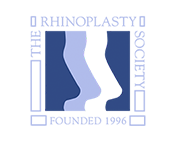
By age 40, most people notice that their stomach protrudes more than it used to—even if they haven’t gained much weight over the years. Though this belly “pooch” is often caused by normal changes in fat distribution, stomach protrusion can indicate the presence of a more serious underlying condition: Diastasis recti.
What is Diastasis Recti?
Diastasis recti is the medical term for abdominal muscle separation. Abdominal muscle separation occurs when the band of connective tissue that joins the edges of the abdominal muscles (known as the linea alba) becomes stretched. This stretching causes the abdomen to “spread” because the muscles are no longer capable of compressing the organs and other tissue inside the abdominal cavity. Instead, the weight of the organs presses directly against the linea alba, pushing the stomach outward. This creates a distinct pot belly, even on individuals who are a healthy weight.
Aside from the aesthetic issues diastasis recti creates, this condition can also lead to several medical problems. People suffering from abdominal muscle separation have a higher risk of experiencing chronic back pain, urinary incontinence, and hernias.
What Causes Diastasis Recti?
Diastasis recti usually occurs following pregnancy. In fact, up to two thirds of all women who have had children experience some degree of abdominal muscle separation. Having multiple pregnancies, carrying twins, carrying a heavy baby (one over eight pounds), and becoming pregnant later in life can all increase the likelihood and severity of diastasis recti.
Weight gain can also lead to abdominal muscle separation, especially when a large amount of weight is gained very quickly. Many obese individuals suffer from diastasis recti, whether they’re male or female.
How is Diastasis Recti Treated?
Tummy tuck (abdominoplasty) surgery is the only effective treatment for diastasis recti. Once the tissue that connects the abdominal muscles has become stretched, it usually won’t heal on its own, regardless of how much you exercise. In fact, some abdominal exercises have been shown to do more harm than good; crunches and sit-ups, for example, can make diastasis recti worse. If you think you have this condition, you should talk to your doctor before beginning a new workout routine.
When performing abdominoplasty, our surgeons use strong sutures to reinforce and repair the linea alba. As the patient heals after surgery, the linea alba becomes strong and tight again. This brings the abdominal muscles into proper alignment, allowing them to support and compress the abdominal cavity. Our surgeons may also talk to you about using surgical mesh (usually GalaFLEX) to reinforce the closure, making your abdominal wall even stronger. Excess skin, stretch marks, and unwanted fat are also removed during tummy tuck surgery.
If you have diastasis recti, you’ll notice that your stomach is much flatter and leaner following abdominoplasty. (Some patients report looking like they’ve lost 20 pounds after having a tummy tuck.) You’ll also be able to safely use exercise to strengthen your abdominal muscles, once you’ve completely healed from surgery.
Get Help for Diastasis Recti
To have tummy tuck surgery, you’ll need to be in good overall health and have a normal BMI. If you meet these criteria and you feel ready to pursue treatment, our caring, compassionate doctors can help; simply contact us to arrange your consultation today.





